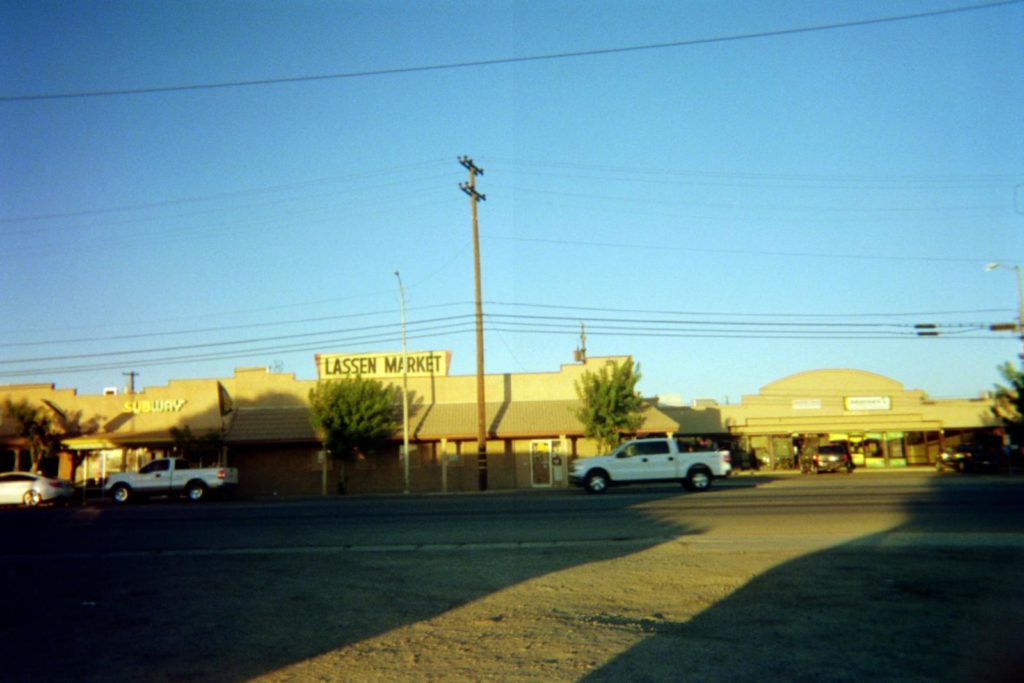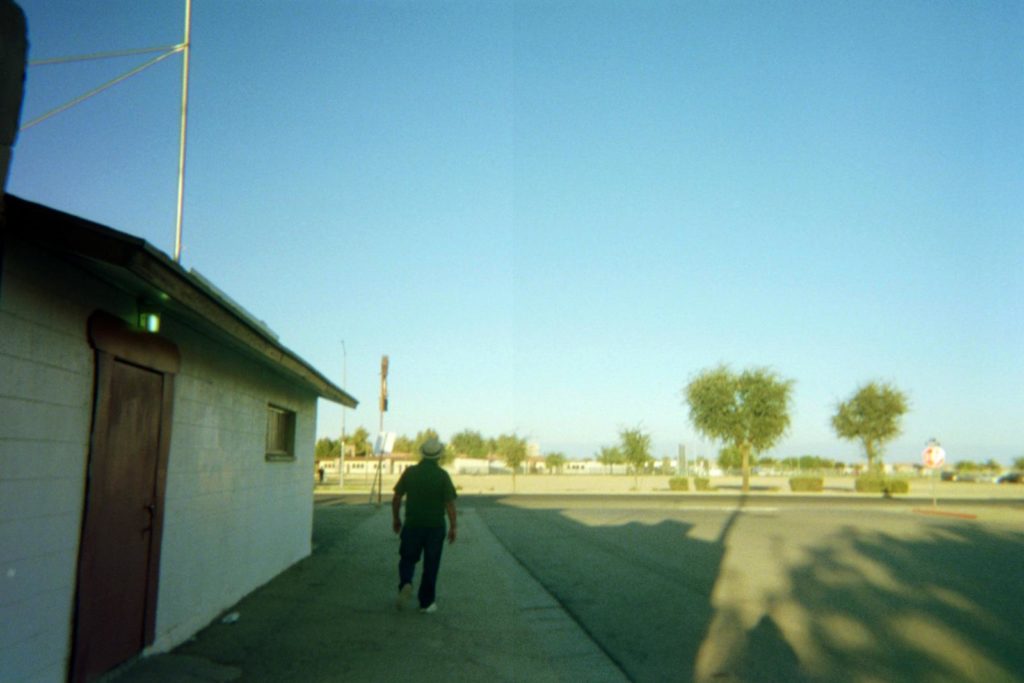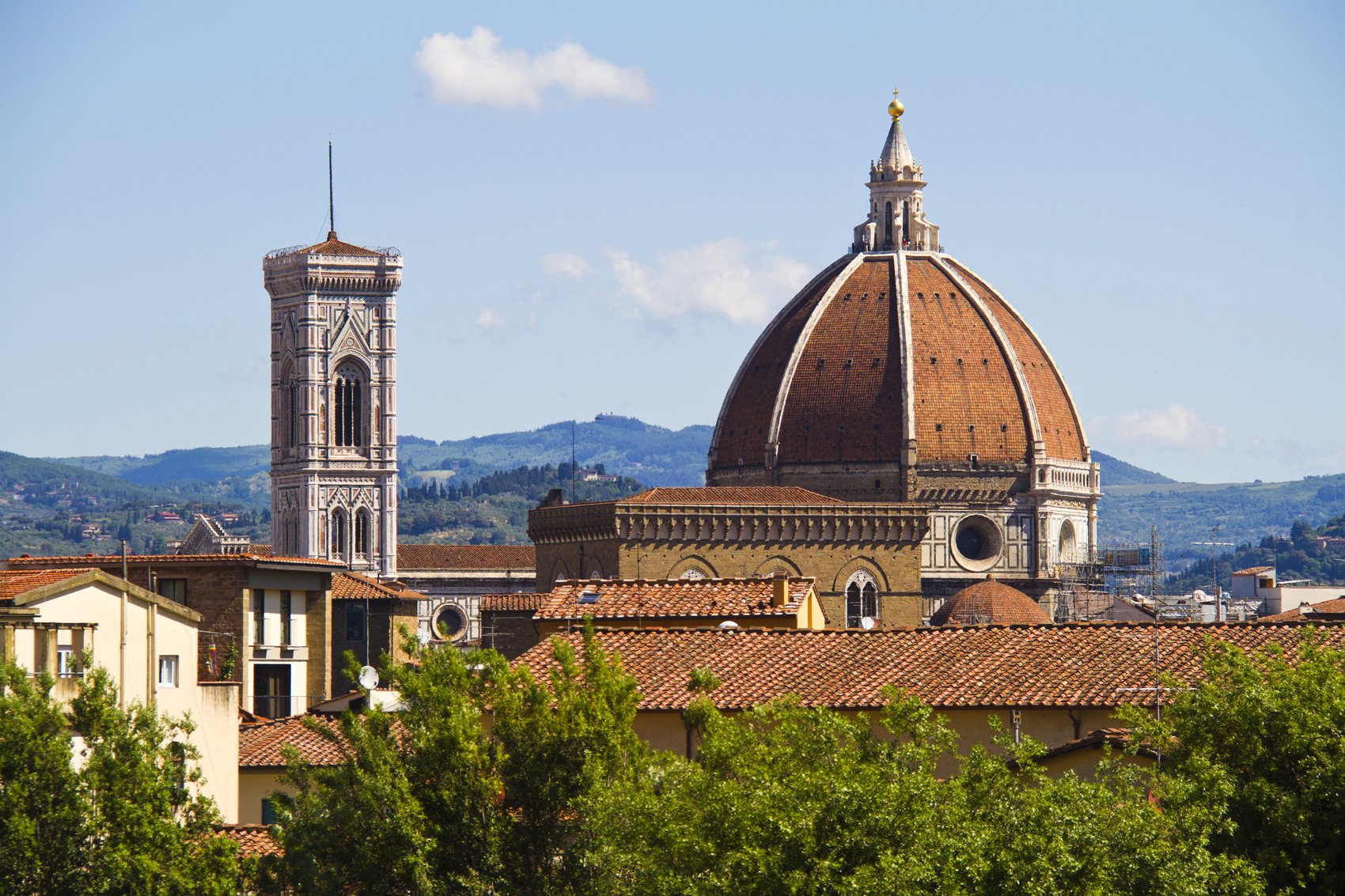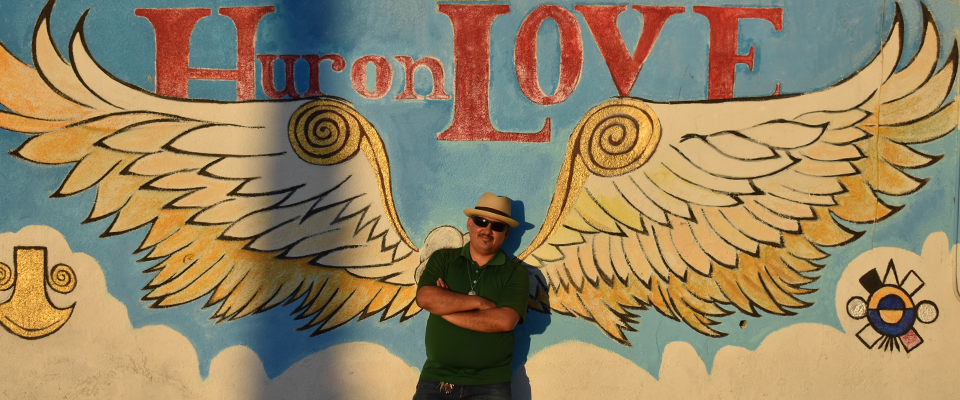This is the second installment in our series, Greetings from California, in which writers file dispatches exploring untrodden, unappreciated, or just unusual corners of the Golden State. (In the first, “Greetings from Willow Creek,” former California editor Krissy Eliot checked in from Bigfoot country.)
Almost five hours after leaving San Francisco and an hour or so since NPR fizzled out, I finally see it: a blue sign bearing a large cornucopia and the words, “CITY OF HURON, CALIFORNIA, The Heart of The Valley.”

Then nothing. The empty road stretches on for a few more minutes before scattered buildings start to come into view behind shimmers of heat. I enter the town proper and pull into a tree-shaded spot outside City Hall. It’s a low-slung structure, nearly indistinguishable from the adjacent police station; other than some faded flags, it appears entirely unmarked and, at first glance, abandoned. I try a couple of doors before one opens with a blast of cold air. Inside, the acrylic countertop and waiting chairs hint at a dentist’s office.
No Rey León.
I wander back out into the heat, which, at over 100 ̊F, is bad even by Central Valley standards. Sweat has just begun to dampen my neck when my phone rings.
“I’m here!” I tell him. “You can’t miss me. I’m the white girl in the red hat.”
A comically small white car rolls up behind me, a large face peering out the window. I’m suddenly very aware of my city-girl-takes-the-valley look: jean shorts, t-shirt, baseball cap.
“Yep,” he says into the phone, laughing. “You stick out like a sore thumb.”
As we zip down the main street—Lassen Ave it’s called—I feel a kinship with his little car. Like me, it’s new to town and, like me, it’s blindingly white.

“So, how do you like the car?” Rey León asks, as if on cue.
He tells me—voice booming with pride—that his is just one of a fleet of electric vehicles moving into the area. They’re the infrastructure for his new ridesharing program called the “Green Raiteros,” a sort of Uber for rural communities—and the reason I came to Huron in the first place.
For decades, León explains, Valley residents have relied on an informal, self-organized carpool system to avoid the six-hour-long bus rides to and from Fresno, where they go for health care and other services. The name Green Raiteros, comes from the colloquial Spanglish word raitero, meaning a person who gives or takes rides.
“Like ‘Give me a ride! Give me a raiter!’” León demonstrates in a thick accent.
He thrusts a flyer into my hand, and I see a flash of silver—an engraved ring—wrapped snugly around one beefy finger. With his fedora, neatly trimmed mustache and goatee, and flashy Aztec pendant hanging from a silver chain, he reminds me more of a pawnbroker than a politician. As he drives, he sits inclined towards me, attentively, one arm wedged between our seats and the other casually resting on the steering wheel. None of it quite matches my idea of what a mayor should look like.
Oh yeah, did I mention he’s the mayor?
León was born in Fresno and raised in Huron, a tiny “suburb” of Fresno. After completing his undergraduate studies at UC Berkeley in 1997, he returned to Huron and, in 2016, was elected mayor in a landslide victory, beating his opponent, the long-time incumbent Sylvia Chavez, with over three-fourths of the vote. And he couldn’t be more proud.

“We’re the brownest city in the country,” he boasts. “But we’re very diverse. Even though someone will come into town and say, ‘Oh, it’s just a bunch of Mexicans.’”
While Huron’s population (which León estimates at upwards of 10,000) is primarily from Mexico and the Americas—immigrants or children of immigrants, it’s also a menagerie of cultures, a place where residents speak dozens of languages from Spanish to Nahuatl, Maya to obscure Oaxaca dialects. León himself knows English, Spanish, and some Purépecha, the indigenous language of Michoacán.
“Who knows what other languages we have that I haven’t come across yet,” he says.
The fields whizz by, quickly turning from brown to green and back again. Over a soundtrack of soft Latin beats, León tells me about his plan to implement a restorative justice program for youths that will help kids accused of petty crimes get out of the system and back into normal society. A program, he explains, that would likely be the first of its kind in the Valley.
But that’s not nearly the end of his ambitions for Huron.
He rattles off a long list of things he has planned to beautify his city, things as small as replacing over 200 broken light bulbs with new LEDs and as big as developing an “arts district” in what is now an abandoned alley.
Honestly, it all sounds kind of fanciful to me. Huron, whose gangs have earned it the unsavory nickname of “Knife Fight City,” is consistently ranked as one of California’s poorest cities, without so much as a Chamber of Commerce or even a Burger King to its name. Admittedly, I know almost nothing about the local economy of the Valley. But I can’t imagine where he’s going to get the resources for electric charging stations and mural art. When he mentions plans for a city plaza I nearly laugh out loud.

A plaza, he tells me with complete earnestness, will strengthen local identity by bringing together the diverse mix of residents, from long-time locals to recent arrivals.
“A ‘multimodal, culturally relevant, pedestrian refuge place,’” he says. “A.k.a., a plaza.“
Rey León’s parents emigrated from the Mexican state of Michoacán and, like many in Huron, they never made it past the third grade. Only three of his seven siblings finished high school; two passed the GED in prison. But León, a self-proclaimed nerd, became obsessed with the idea of going to college—Berkeley, in particular. He first learned about Cal during his sophomore year chemistry class at Avenal High School when they were studying the periodic table. He vowed to discover his own element.
“I turned to my lab partner, and I said, ‘I’m going to go to UC Berkeley and I’m going to discover Leonium.’ And we just cracked up. It sounds like a real element, right?”
León says he didn’t know about qualifying exams like the SAT or the ACT, and he ended up taking the SAT at the last minute, the morning after prom, still in his suit. He graduated with a degree in Chicano Studies four years later.
“When I speak to youth, I tell them that story. As a kid, I hustled. And it got me to realize a dream that I had, which was to go to Berkeley. One thing that I realized is that Leonium, it’s not a transuranic element. It’s a social justice element. I’m that element. That’s the element I set out to discover in Berkeley. And I didn’t realize that it was me.”
León is facing a lot of hurdles in his effort to bring better college prep to the students of his city, including a lack of resources. But another part, he explains as we run mayor-ly errands around the Fresno area, is deeply embedded in Huron’s history.

He takes me to his favorite café in downtown Fresno. Inside, the air-conditioning is almost as shocking as the heat is outside, and I shiver as we settle into a lacquered wooden booth. Over Frisbee-sized plates of salad, which León eats in giant leafy forkfuls, he takes me back in time to when Huron first became a city.
It was in the late 1800s, he says, that Huron, with its proximity to Tulare Lake, earned a spot on the map as a water stop along the Southern Pacific Railroad. Over the next century, Huron became a main producer of products like wool, cotton, and—when a canal was built in the mid-sixties, making surface water accessible—crops like melon and lettuce, which sealed Huron’s reputation as a “cornucopia.”
Everything changed, he continues, when Coalinga, the neighbor to the southwest, introduced oil. While Coalinga boomed, bringing in jobs and workers, Huron sunk in comparison, becoming the labor camp and agricultural hub to Coalinga’s big industry.
And to this day, says León, racism and classism plague the neighboring communities, who have little in common other than their shared school district. Coalinga, which is wealthier and whiter, houses the high school for both cities, which means that teenagers in Huron have to travel more than an hour to get to school—where they face discrimination from their teachers, their peers, and the administration. “You’re a second-rate citizen if you’re a Mexican from Coalinga. You’re a third-rate citizen if you’re Mexican from Huron. That’s been our experience.”
Huron, is isolated from surrounding areas in other ways too. During the 1995 flood, a massive storm cut off access to the only major road in and out of Huron. Seven people drowned in the floodwaters after the town’s only bridge, the Arroyo Pasajero, collapsed.
“When that incident happened…well, let me preface it by saying, no emergency vehicles or helicopters or Red Cross or Fire Department—nobody came through to try to find the bodies. Who did come through was the community. And they came through with buckets and shovels.”

By his account, it was a unifying moment for the community. “Because a bridge broke, another bridge came about,” he says prophetically.
We finish our salads, and he drives me to the spot where the tragedy occurred. Having taken a liking to my DSLR, he points to a nondescript stretch of field along the highway and insists I shoot some photos of the “scene.” I feel him watching me as I aim my camera out the window. I click, and he tells me about his plans to build a new bridge connecting Huron to the main highway.
“I should name it ‘El Puente de La Raza Unida’—‘The Bridge of the United People’—because it was that day that the people united to recover the bodies.”
Back in Huron, León takes me on a tour of the city. Highlights include a row of young trees he planted himself and an outdoor library—an empty bookstand perched on the sidewalk outside an old party supply store. “Look, Berkeley!” he says, gesturing to the stand’s blue and yellow paint job complete with a Cal bear on top.
We pull off the main road to an old lot guarded by a metal fence and a sad-looking pit bull. León takes me through the abandoned warehouse which is to become a new workspace for the Green Raiteros. Where I see decay, he sees possibility: a lobby with waiting chairs! An office with computers! He seems unperturbed by the man, seemingly homeless and not entirely lucid, who follows us silently from room to room.
“To me it’s all about clean energy,” León says. “It’s all about renewable technologies. That’s where our future’s at.”
We wind through some more back streets, including a long stretch of dusty alleyways—future home of his beloved Arts District. He admires crumbling, brick walls the way an artist might admire a blank canvas. I thought he’d be bothered by my camera, but he keeps imploring me, “Take more pictures!”
As we meander through town, he rolls his car window down to greet the passersby in loud Spanglish. Sometimes he seems to be catching up with old friends, and other times—as with the local troublemakers—his tone is gently scolding. He pulls some weeds and stops more than once to pick up trash. No matter the shiny new Chevy Bolt, prestigious college degree, and government title. “I’m a ‘sleeves-rolled-up’ kind of mayor,” he tells me. “Sometimes we gotta get off our high horse and grab a shovel.”
The last stop is a tiny shop on the main drag where he has promised me the best tacos west of the Mississippi—a rather bold claim in California. The exterior is nearly identical to its neighbors: dark, unmarked, and dusty. A hole-in-the-wall, you might call it, if you were feeling generous.
The inside is long and narrow, with sea-foam green walls, a sky-blue linoleum floor, and two large glass cases full of meat. As León leans on one and chats up the owner, I decide to test out my “intermediate-advanced Spanish” on the other shopkeeper. He offers me a taste of what I understand to be some kind of beef. It only takes a moment for me to realize that the unidentified piece of meat on my tongue is, in fact, tongue.
I swallow and smile and ask for dos tacos con pollo, por favor. León seems disappointed by my choice. I’m a little disappointed too.
As we eat, hunched over a little table next to the counter, he tells me about growing up in Huron, how the annual lettuce season would bring a massive influx of traffic and migrant workers and, sometimes, violence. The population would double, restaurants would thrive, and residents would rent out their extra rooms. “It was the Airbnb before Airbnb,” he says.

All that has changed since droughts and development have redistributed the crops, pushing more labor-intensive ones out and bringing less labor-intensive ones—like almonds and pistachios—in. León believes that his city’s future lies in an industry that doesn’t depend on water.
“To me it’s all about clean energy,” he says. “It’s all about renewable technologies. That’s where our future’s at.”
It’s been three years since his election, and he seems to be gaining momentum, adding more and more items to his to-do list. León wants to make a bigger name for his city—literally.
Before I depart for the day, I ask him to pose for me alongside the city limit sign.
“It’s a small town, man,” he says, adjusting his fedora. “You could miss it if you blink. There’s only one sign that says our name. I’m going to have to request another, bigger sign.”





















